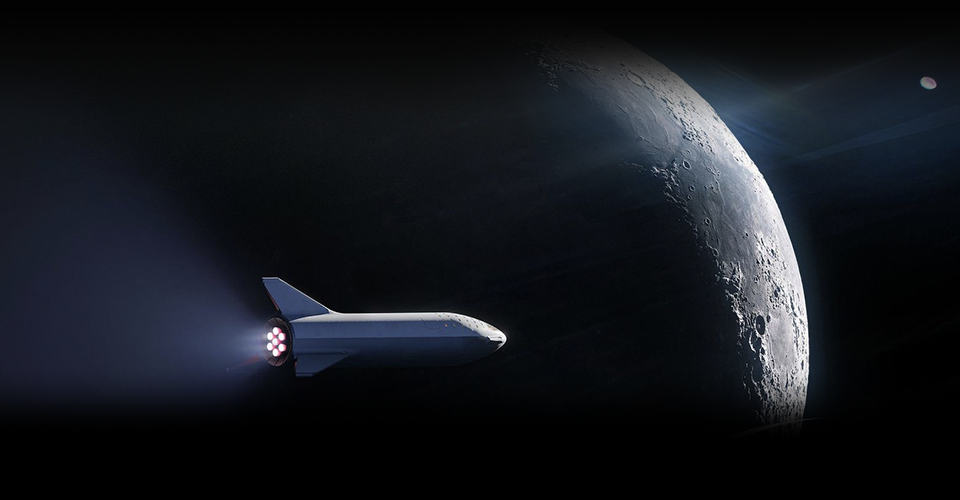by K. D. Williamson
Everyone knows about the climate collapse of 2030, the century-long decline that built up to a single day: Red Day. On August 6, 2030, the last wild elephant died in India – its African cousin having preceded it by four years. More than two centuries have passed and we still feel it all around us: the finality of living on a planet that could no longer support large mammalian life. Everything we know is a direct result of Red Day, the day the world mourned.
Space tourism was THE advent of the 21st century. Humanity knew commercial spaceflight would take a toll on Earth’s resources. There was a fair amount of pushback, especially during the third decade of the century, when trips to space became a trend. The world quickly realized that the wealthiest people would pay double to escape their problems. Space travel became a status symbol, experienced by the elite at their leisure. But when Red Day struck us, we flinched. For the first time, the entire planet was of one shared feeling: despair.
Fortunately, our dreamers and thinkers wouldn’t wear despair for long. Three weeks after Red Day, the leading private spaceflight companies had partnered with world government aeronautics agencies to announce the next phase of space expansion. The first “Earth-Regenerative Biome” (ERB) – an enormous, enclosed, Earth-like habitat in low earth orbit (LEO) – would commence development.
* * * * *
Alyssum was the first ERB, a primarily agricultural and residential colony boasting thousands of multi-story greenhouses. Next came Begonia, the future of space travel and exploration, then Coreopsis, the center for heavy industry. Several highly specialized ERBs followed, such as Delphinium, the nuclear research base, Forsythia, the medical research base, and Lotus, the center for historical preservation. Hyacinthe was perhaps the most ambitious project, designed to harness solar wind and light to bear all of Earth’s energy needs. These cylinders, and those that would follow, would be built using materials mined from space, with the goal of salvaging and restoring Earth, our Sacred Mother.
* * * * *
I wake up on Gazania, the Species-Restorative ERB, with the abundant sounds of nature surrounding me. I dress in the light materials suited to our hot climate here. I step outside my flat, a yurt-like structure powered by solar collectors, and surrounded by vertical greenhouses where we grow our food. Gazania is barely a century old, but she already knows so much.
I shoulder my pack and head to the compound to gather my supplies. The energy is electric; everyone senses that something big is coming. I go alone to the field today to meet Meta, my girl. Meta is a 24-year-old African elephant, the first conceived and born naturally here on Gazania. I helped with her delivery in my fifth year on Gazania’s African Restoration Team (one of four major teams on this massive ERB), and I have been with her since the beginning.
Meta’s great-grandparents were grown from fertilized ova, here on Gazania, and after a century of careful fertilization, breeding, and nurturing we finally have a population of 62 strong, adult elephants, as well as 18 calves under the age of five. Meta’s own calf, Meela, stands between her legs picking at the grass with her curious trunk.
I rest my face against Meta’s side, and she uses her trunk to pat first her baby and then me on the back. She is majestic. In her, I see a dream of abundant life, reborn. I see Earth as it was in the books of my grandmother’s library: a place full of beauty, energy, and hope.
Introduction to Commercial Space Travel
Space tourism is defined as commercial space travel designed for civilian leisure. In other words, civilians pay for space travel via government or private vessels for recreational purposes. In the 1960s, the “Space Race” between the Soviet Union and the USA drove space programs in these nations to launch astronaut-bearing spacecraft more frequently in orbital and moon-landing voyages. It would be several decades, however, before talks of civilian space travel would be actualized.
A History of Space Travel and the Dawn of Space Tourism
In 1961, a few years after the Soviet Union’s successful Sputnik 1 launch, the Soviet’s Vostok 1 carried cosmonaut Yuri Gagarin into orbit, making history as the first man in space. The “Space Race” – a competition between the U.S. and Soviet Union to put a man on the moon – ensued. In 1969, this goal was realized when NASA’s Apollo 11 spacecraft landed on the moon, bearing astronauts Neil Armstrong and Edwin Aldrin. Once Armstrong stepped foot on the moon, the space community began to dream of taking civilians to space.
The 1970s Apollo Soyuz Project marked the beginning of international collaboration during the space shuttle era. In the 1980s, the National Aeronautics Space Agency (NASA) planned to send the first teacher, Christa McAuliffe, to space. She was aboard the Challenger on its 10th space voyage when disaster struck shortly after launch, destroying the shuttle and her crew. This shocking tragedy stalled progress in the USA’s space tourism industry for many years.
The late 1990s saw a resurgence of interest in space tourism, and several companies and partnerships were formed. Though these companies worked with civilian space travelers, the voyages were planned aboard government vessels belonging to NASA or to the Russian Federal Space Agency (RFSA – ROSCOSMOS). In 2001, wealthy American Dennis Tito paid $20 million to secure his spot as the first “space tourist,” and he traveled to the International Space Station (ISS) aboard the Russian Soyuz rocket. Several more civilians went to space in the following years, but the industry didn’t truly ‘take off’ at this time.
Today’s Leading Space Pioneers
Our greatest strides in space exploration prior to this decade have been initiated, regulated, or conducted by government entities such as NASA and ROSCOSMOS. Now, privately owned corporations are coming to the forefront. This means that there will be a higher ceiling for risk-taking as well as more consistent revenue (not tax-dependent) flowing into this domain. Hopefully, we can look forward to more continuous and ambitious advancement.
Jeff Bezos founded his spaceflight company, Blue Origin, in 2000. Since that time, his company has been working on fuel propulsion technologies that can sustain human flight and transport large shuttles into orbit. Blue Origin launched Bezos on its first successful manned flight to the edge of space on July 20, 2021 via the spacecraft, New Shepard. The crew of this historic flight included both the oldest and youngest space passengers, Wally Funk and Oliver Daemen, respectively. New Shepard is reusable and fueled by high-powered, inexpensive, hydrogen. Blue Origin’s much larger vessel, the New Glenn is slated for lift off later this year.
Elon Musk formed his company, SpaceX, in 2002. His plans and designs extend far beyond space tourism, expanding even to interplanetary ventures with talk of a future settlement on Mars. SpaceX is contracted by NASA to ferry crew members to and from the ISS and to take U.S. astronauts back to the moon aboard the Starship. In the last year, the Crew Dragon spacecraft successfully completed three crewed missions to the ISS. Perhaps the biggest news in commercial space travel to date is the Inspiration 4 mission, where SpaceX’s Crew Dragon spacecraft flew four civilian passengers to Earth’s orbit for three days before landing safely on September 18, 2021.
Virgin Galactic’s Richard Branson has claimed he wants to make space accessible for everyone. Despite initial setbacks for Virgin Galactic, it launched its first successful fully-crewed sub-orbital spaceflight with Branson himself aboard the VSS Unity on July 11, 2021. Virgin Galactic’s first commercial space flights are expected mid-October, 2021 on the Unity 23 spacecraft.
Space Tourism Goals
The third decade of the 21st century appears to be on track for making history in space exploration and space tourism. Private sector companies are driving the forward push and making space travel a reality for wealthy civilians worldwide.
The two emerging types of space travel are Suborbital Space Travel (SST) and Orbital Space Travel (OST). SST involves launching to the “edge of space,” just past the Kármán line, a somewhat arbitrary boundary approximately 62 miles above sea level, where one can begin to experience the sensation of weightlessness. SST may be the future of point-to-point international travel. The second, and more ambitious type, is OST. This could include trips to the ISS, the moon, and even Mars. SST and OST are in separate classes in terms of price, the types of spacecraft required, the time involved, the inherent risks, and potential gains.
Previous space ventures have primarily centered around a “Space-for-Earth” modality. Space exploration has served to increase our scientific knowledge and understanding of the cosmos, advance leading nations on the political stage, improve internet technologies, and enhance Earth’s security.
To fuel the enterprise of commercial space travel, more companies will need to develop “Space-for-Space” paradigms: producing goods for space from space – even using materials found in space. Made in Space, Inc. is one example of a company working to enable space-manufacturing. NASA awarded them $73.7 million for an orbital manufacturing demo. Another company, Axiom Space, is building the first commercial space station which should boast twice the usable area of the ISS. Space stations, lunar bases, satellites, outposts, and even colonies constructed in space using resources mined from the moon and the asteroid belt could be the future of commercial space travel.
In a 2019 speech on the future of space travel and the role of Blue Origin, Jeff Bezos discussed why space travel will be positive for the earth. Bezos asserted that current space endeavors are necessary for the preservation of Earth. He stated that this generation’s job is to “build the… road to space” with the goal of moving heavy industries off-Earth and eventually constructing Earth-like biomes in space, such as the “O’Neill Colonies” first proposed by physicist Gerard O’Neill in the 1970s.
The potential for space is vast, as is the potential for error.
Impact of Space Tourism for Life on Earth
What will daily life on Earth be like when space tourism is a reality? From a social perspective, trips to space may become a status symbol which only broadens the gap between the wealthy and the poor. One can imagine weddings and birthdays in space, photo shoots, and even prominent business meetings. Until the space tourism market has enough competition to drive the prices down, only the most wealthy can afford civilian space travel.
The economic impact of space tourism is two-fold. Commercial space travel may drive an increase in spending and profit in a world economy battered by COVID-19. It has the potential to rejuvenate the economy by arresting the ambitions of the ultra-wealthy while creating thousands of jobs globally. However, there is also the possibility that excess funds belonging to the wealthy will be funneled away from charitable causes or climate remediation only to be invested in a personal quest for space.
It is unsettling to consider the environmental load of frequent space launches. Rocket launches require exponentially more fuel than airplane or jet travel, but not all fuel types are created equal. This commercial enterprise could rapidly drain Earth’s remaining natural resources and pollute the upper atmosphere at startling rates. The potential upside of this argument is that the “Space Race” could drive interest and investment in biofuels and renewable energy sources for space exploration and potentially advance the timeline for sustainability on Earth. There is also the intriguing possibility that new resources might be discovered in further space exploration. The sooner the “road to space” is paved, the sooner O’Neill Colonies can begin construction and help ensure a future for humanity on and beyond Earth.
In considering the potential political ramifications of space tourism, a simple question arises: “Can space be owned?” Earth’s landscape bears the scars of political warfare across the centuries. As humanity reaches toward space, international leaders will be confronted with the issues of how space tourism will be regulated and what interplanetary governing systems will be established. Will efforts in space affect political relationships on Earth by bringing estranged nations together or create strain in unexpected ways?
Concluding Thoughts on Commercial Space Travel and its Implications
The “Space Race” has far-reaching implications for life on Earth. There is much to anticipate from space over the next several years. It is critical that a balanced plan be constructed for addressing climate change on Earth, evaluating the impact of space shuttle emissions, and continuing the pursuit of renewable energy sources on both Earth and in space.
Both the Space-for-Earth and Space-for-Space modalities can benefit humanity, but in considering the drawbacks of commercial space travel, it is apparent that the least desirable outcome is to create an “Earth-for-Space” framework, where this planet is siphoned to fuel future dreams of space. The onus is on government and private sector leaders to advance cautiously, pursuing long-term gains in knowledge, resources, and opportunity while minimizing the potential harm to the only life-sustaining planet in our awareness. Leaders in the space arena must work together to ensure that the best and safest technologies are being used and utilized efficiently to create a space paradigm that benefits and restores Earth.
* * * * *
This day has been two centuries in the making. My crew touches down on Earth in our spaceship, The Golden. I step out of the spaceship and plant my feet on the plains of Africa. I feel the ground bounce up to meet me. Depth. I glance around me and admire the gentle waves and contour of the earth. So much beneath the surface. I reach down and feel the dry soil, the crisp grass, a hum beneath. I close my eyes and inhale the wild, sweet smell of Earth.
With my team unloaded, we turn our attention to the cargo bay. I give the orders to lower the hold, and we wait in animated suspension. I feel a slight, stuttering, rumble and see a small trunk reaching, feeling outward. Two-year-old Meela ventures forth, her protective mother reluctantly following. Meela reaches the soil, lies down and rolls. Meta nudges her gently with a soft trunk. They begin to play, walking and stomping around one another. The calf moves with unconstrained excitement, the mother with care and some timidity.
This pair is the beginning of our recolonization: The first elephants on Earth since Red Day. I place a hand on the firm ground and close my eyes again. I feel the vibrations of Meta and her calf joining with the gentle thrumming of Earth. I realize in this moment that all of Earth shares a song, a continuous story of every living creature that has been and will be. I remind myself how close we came to losing it all and shed a tear to our Sacred Mother.









